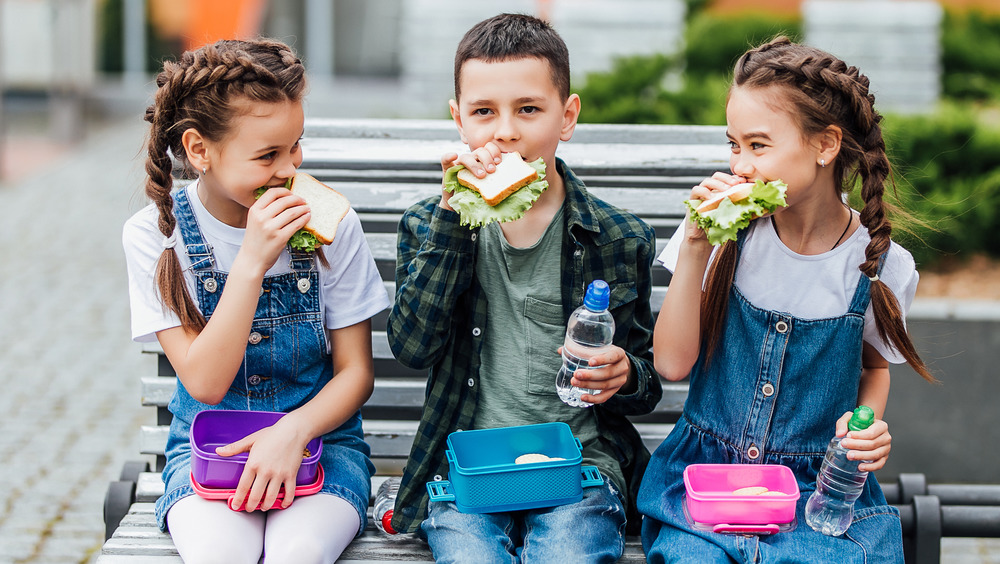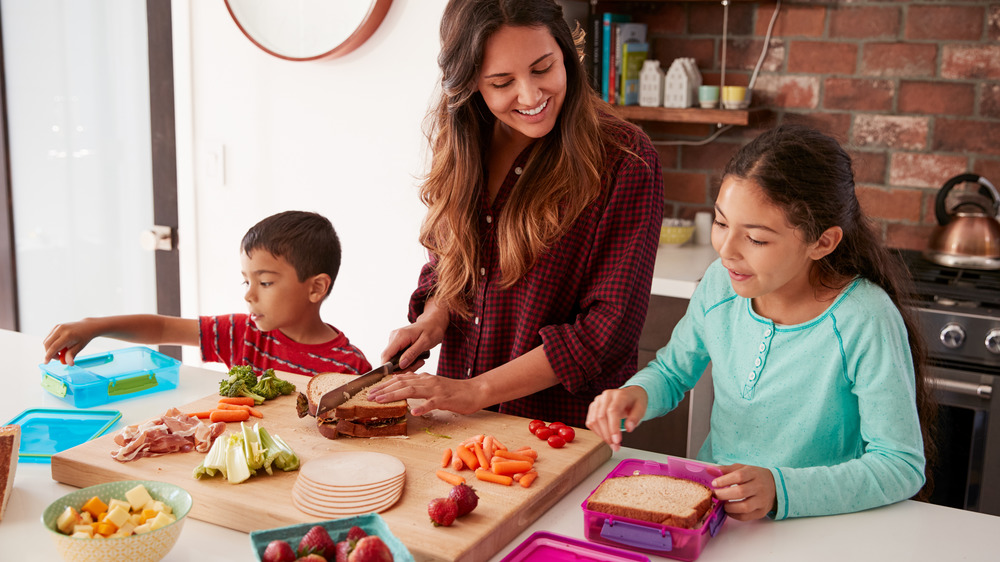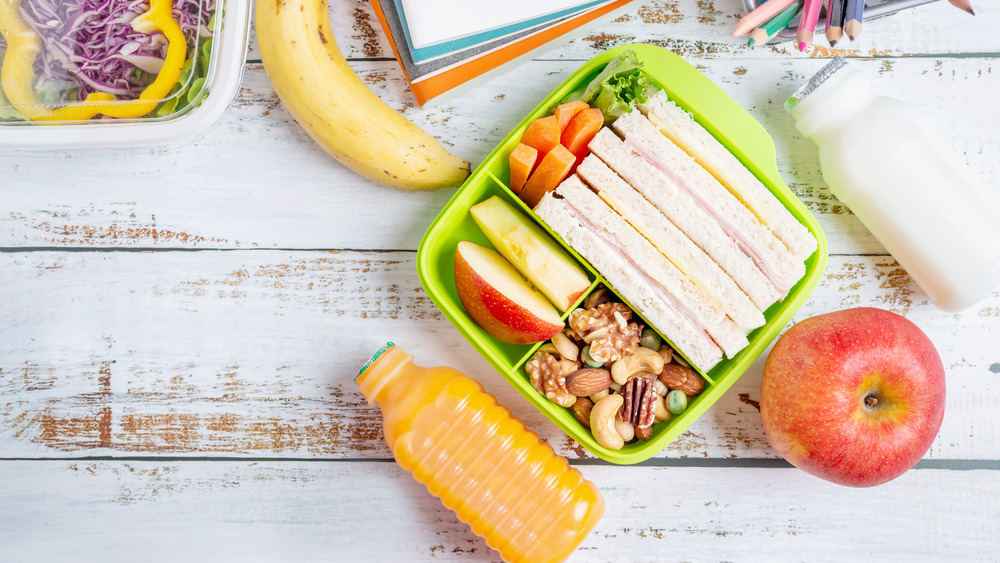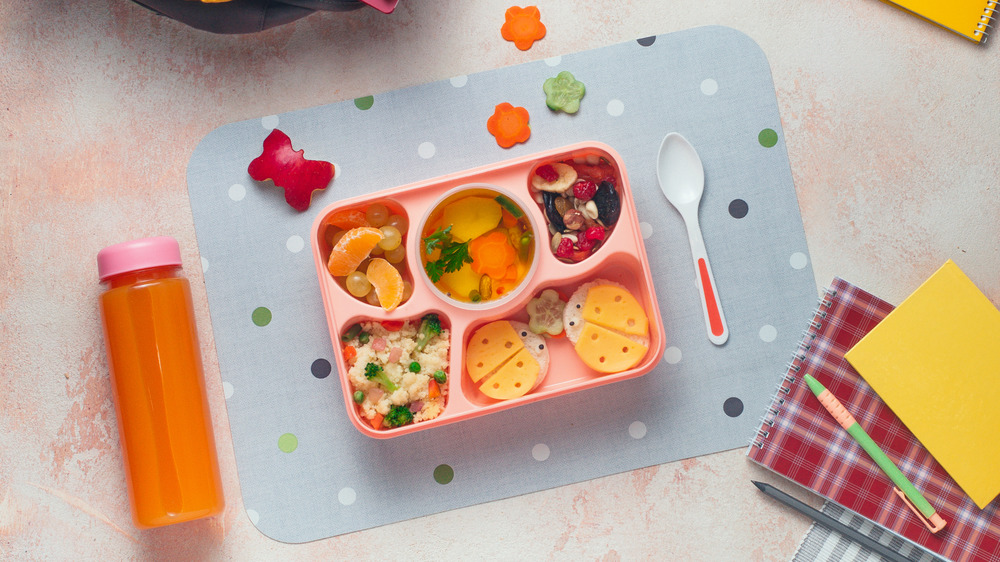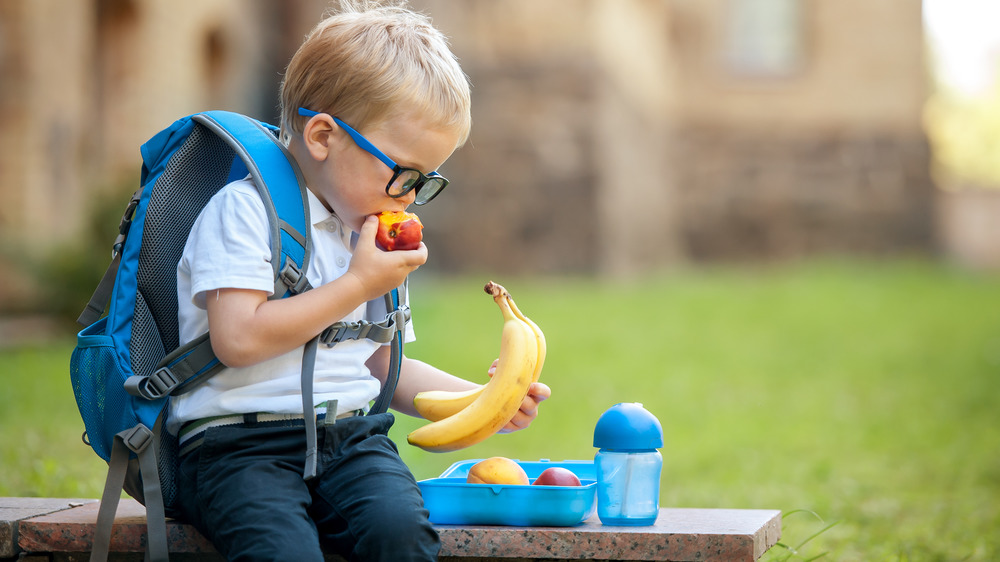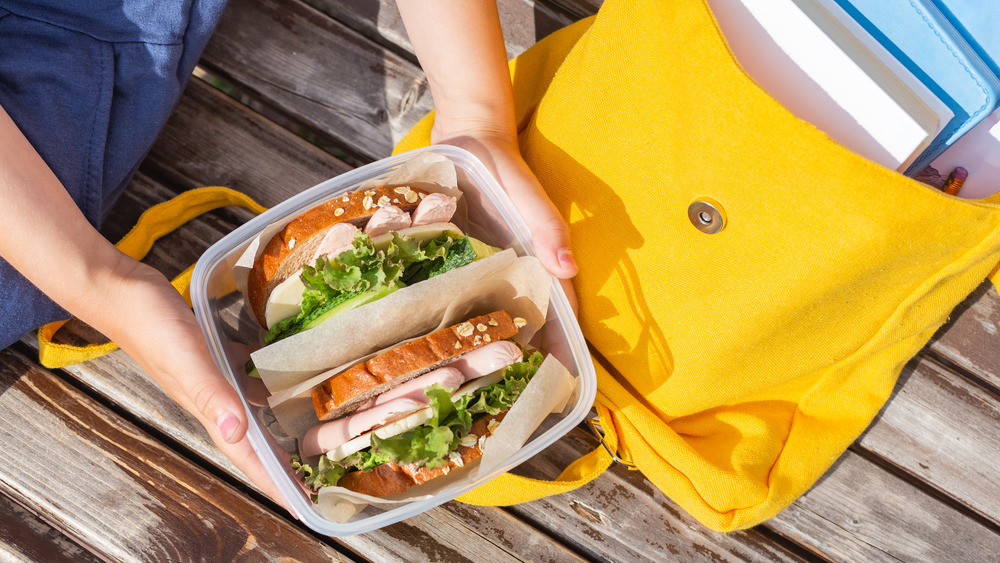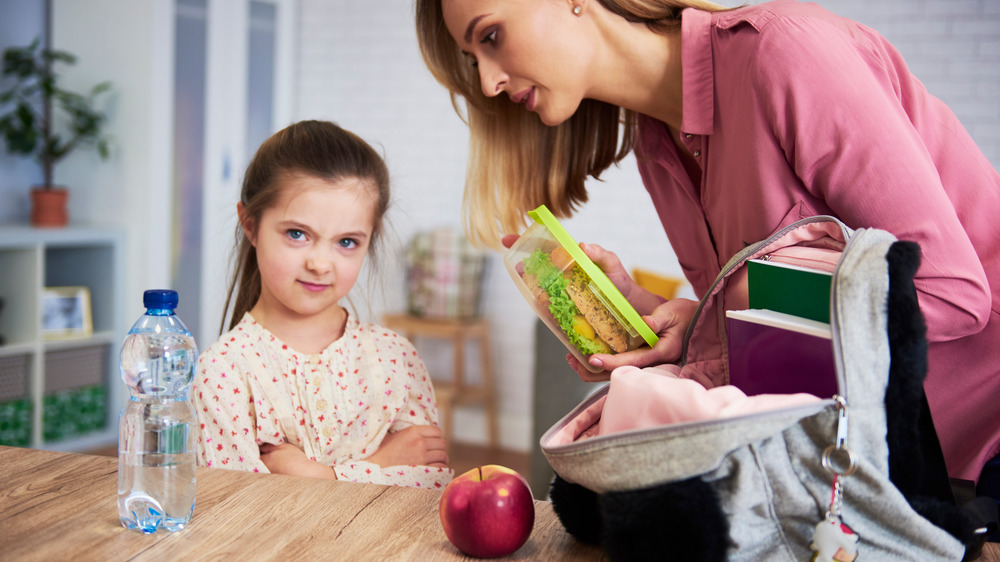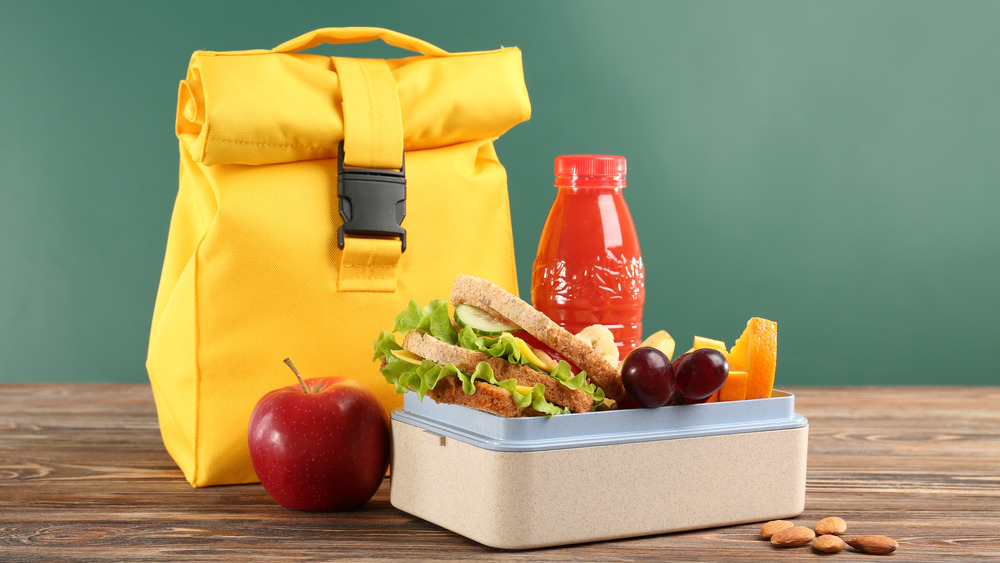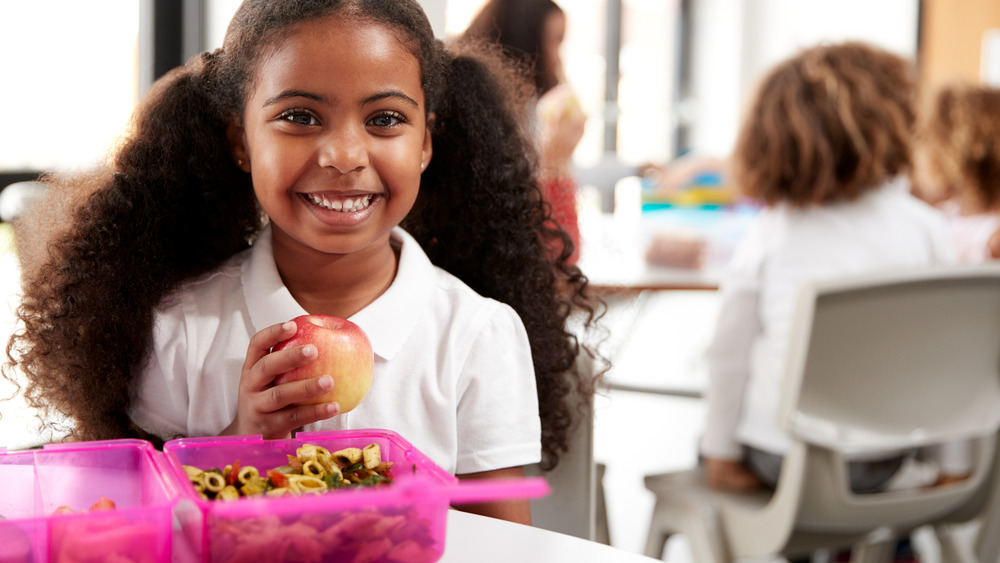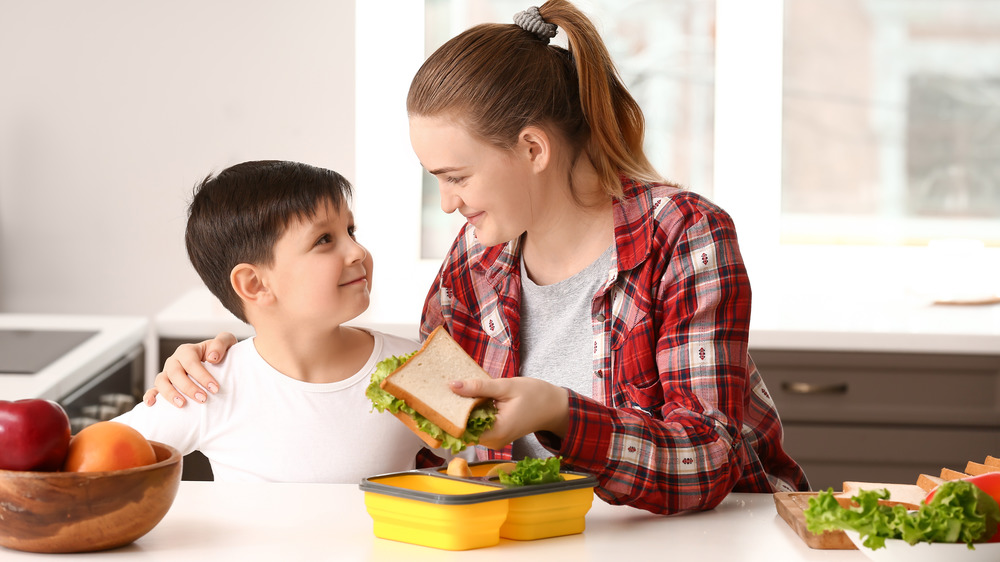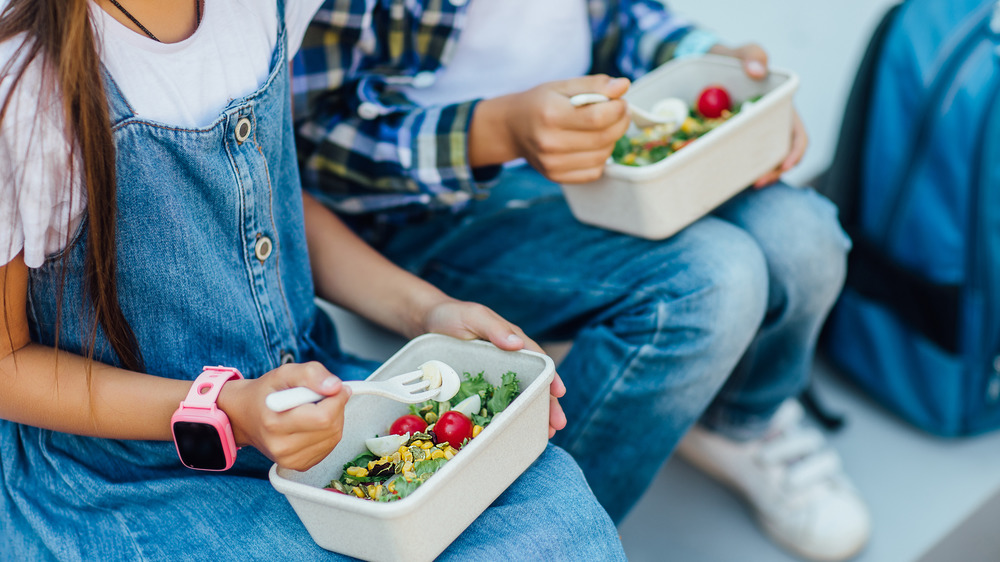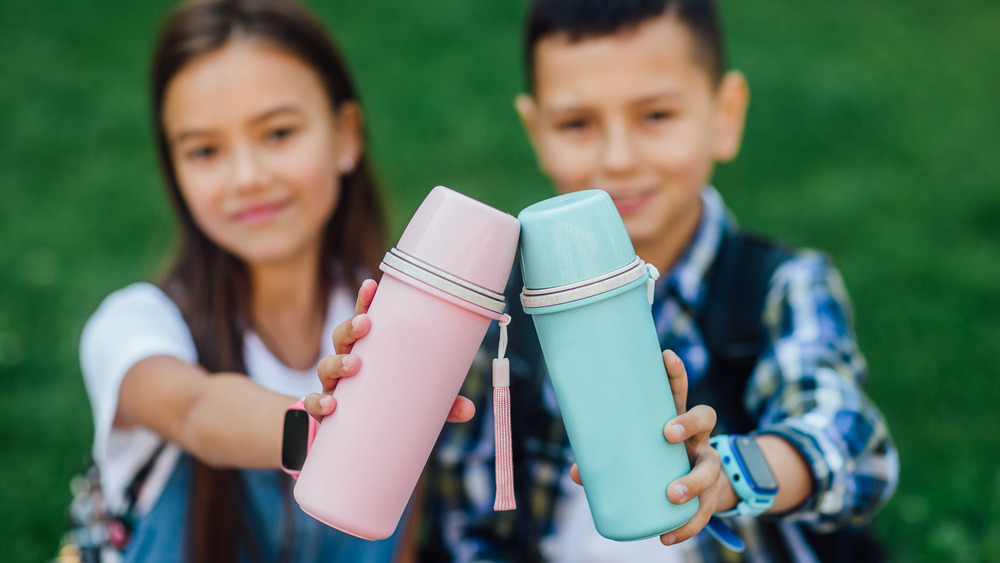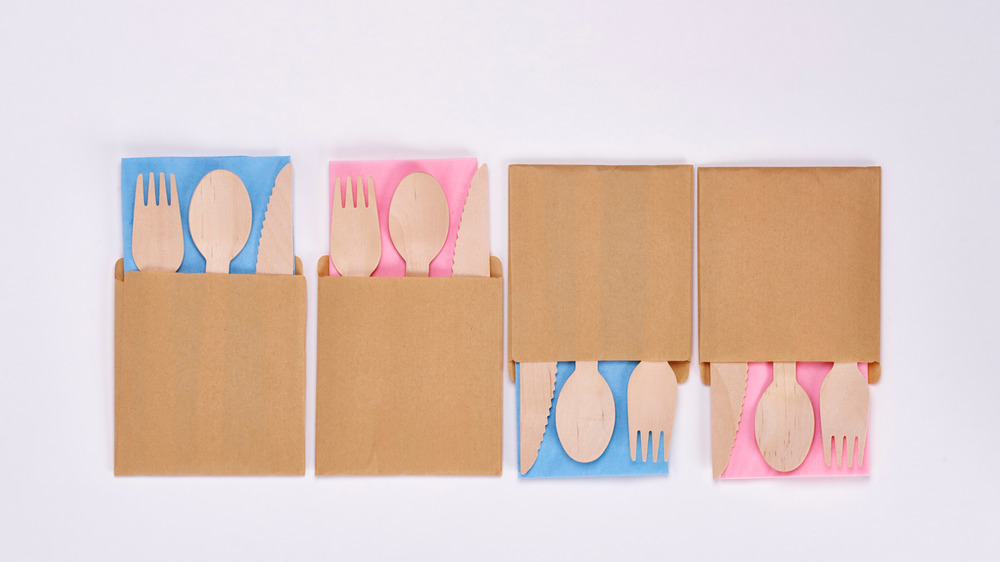Read This Before You Buy A Lunch Box For Your Child
When it comes to shopping for school supplies, there are few things that are as much fun as a new lunch box. (And, let's be honest — it's pretty fun when you're shopping for grown-up lunch boxes, too!) There are so many options out there, with a ton of different designs, made out of a bunch of different materials, in every color of the rainbow.
As fun as it is, it can also be a little overwhelming. And here's the thing: you'll need to be like Indiana Jones and choose wisely, or you'll have more than regret — like the guy that went first and ended up having his face melted off (spoiler alert!), you could end up having a really, really bad day.
Lunch boxes, after all, keep your child's food safe until they're ready to eat. And given that lunch is usually hours into the day, it's important that you pick something that's going to do that job ... while keeping everything from spilling and turning into a messy surprise for your hungry little ones to uncover when they hit the cafeteria.
So let's talk about lunch boxes and what you need to know before you pick one out. (And yes, this all applies to your grown-up lunch boxes, too!)
Take the time to plan what you're going to include
Before you even start shopping for a new lunch box, take the time to sit down and figure out what you're going to regularly include in your child's lunch. While that might seem like an odd step, you might be surprised at how handy it is — especially considering how often a growing student's palate might change.
Is your child going through a sandwich stage? Well, then you're going to need a lunch box with a compartment big enough, and sturdy enough that it's not going to get turned into mush in a locker. Do you live in a place where there are months of cold weather, and some soup might hit the spot? Then, you're going to need something with a thermos — or room for a thermos, at least. What about a salad? In that case, you're going to need a lunch box that's not only the right size, but you'll also need something that seals really, really well to keep that dressing where it's supposed to be before your child pours it on.
While you're doing this, consider, too, that organizations like the NHS (via the BBC) now recommend a healthy lunch box that includes a source of protein, a source of dairy, at least one portion of fruits or veg, and a serving of starchy foods. The days of lunch box food staples like Dunkaroos, PB&J, and a juice box aren't what they used to be.
Consider getting a bento box
You also might want to look at getting a bento box: What is that, and why?
According to AllRecipes, "bento" comes from a slang word that means "convenient," and it's definitely that ... along with much more. Bento boxes essentially contain ready-to-eat meals, but they're also associated with being more of a demonstration of love and thoughtfulness than a regular old lunch box, where you might just throw everything in baggies and containers and call it a day.
There are a whole bunch of traditions and forms that go along with assembling a proper bento box, but even if you're thinking, "My kids don't care about that, and I don't have time, anyway!" you still might want to think about the box itself. Bento boxes tend to be deeper than most traditional Western lunchboxes, and that can help keep delicate foods safer — because how long a lunch box will keep food fresh is a definite consideration.
There's another huge benefit, too: as Kangovou points out, they're also very environmentally friendly. Bento boxes are traditionally about art, aesthetic, and appearance as much as the food, so they're designed to be packed very snugly. That helps eliminate the need for things like plastic bags, and if you're trying to cut down on your family's environmental footprint, this is the way to go.
Picky eaters? Here's why you need a lunch box with compartments
If your child is going through a picky phase, don't worry, you're definitely not alone. According to Healthy Children, being picky is completely normal, and there are plenty of tips and tricks you can use for getting them out of this stage. One of those things, says Kangovou, involves selecting the right lunch box.
Specifically, they're talking about bento boxes with compartments that will keep food separated, but will also allow for a pretty presentation that just might persuade a picky eater that hey, if it looks that cool and fun, then it just might taste good after all.
According to Sanford Health, one of the key components of getting picky eaters — and really, all children — to eat food (and new foods) that's good for them is getting them to engage with what they're eating. That means a little creativity on your part, and they say that color, texture, and presentation can have a major impact on how excited your young ones are about lunchtime. So, get rid of the boring old bags, and show them how fun food can be! They'll actually look forward to opening their lunch box, and seeing what you've put on the menu!
Here's what you need to know about BPAs in lunch boxes
Plastic lunch boxes might be one of the most common options out there, but there are some things you should know before picking one up for your child — starting with the fact that The Guardian warns that some chemicals in plastic food containers might have adverse effects on those who use them.
Specifically, they're talking about a group of chemicals called BPA, BPS, and BPF. It's BPAs — a chemical called bisphenol-A — that started the whole thing. BPAs have historically been a common additive to food-grade plastics, but in recent years, there have been more and more regulations and restrictions placed on the use of BPAs, after research uncovered links between the chemical and "neonatal and infant brain and reproductive harm." It's also been found that BPAs can be transferred from food plastics to the bloodstream, where they've also been linked to negatively impacting brain and prostate development. As if that's not enough, it's also been shown to impact behavior in children.
The Mayo Clinic recommends using BPA-free products and looking for labels that specify a product doesn't contain these chemicals. It's entirely possible it's even more complicated than that, though: research published by several universities has found the chemicals used to replace BPAs — like BPS and BPF — may "disrupt cell functioning." And that's all food for thought, especially if you're reaching for a lunch box your child is going to use every day.
Here's what you need to know about PVC lunch boxes
You might think of pipes when you hear PVC, but the truth is, the same materials that go into PVC pipes are used in a wide variety of plastic products — and you should be aware of that when reaching for a plastic lunch box.
The Center for Health, Environment, and Justice published a massive piece on the dangers of PVC in school supplies, particularly in things like lunch boxes, 3-ring binders, and backpacks. They used the town of Mossville, Louisiana to illustrate just how dangerous the chemical often labeled simply "vinyl" can be. Mossville is the PVC manufacturing capital of the US, and in 1999, an extensive study showed area residents suffered from elevated rates of things like cancer, cardiovascular problems, dioxins in blood and breast milk, and diseases of the nervous system.
It's such a big deal that according to the State of New Jersey's Office for Prevention of Developmental Disabilities, a 2008 law banned the use of PVC in children's toys. But, they say that the law doesn't include school supplies, like lunch boxes.
That means being familiar with PVCs, and researching brands that are PVC-free. There are plenty of choices out there: brands like Green Vision, Ecobags, Arctic Zone, and Crocodile Creek all have PVC-free options.
Lunches shouldn't smell like all the other lunches
One of the things you're definitely going to want to keep in mind is the fact that there's going to be a lot of lunches spending a lot of time in that lunch box, and lunch box stink is definitely a thing.
When The Independent did their research into the best lunch box options on the market today, they found something that's pretty important: a lot of lunch boxes out there were really, really good at catching and holding onto the smells of lunches past. If your kids like some foods that are particularly pungent, you might want to consider a lunch box made from the only material they found that didn't hold onto lingering odors — stainless steel.
Otherwise, you might find yourself needing to add an extra step to your cleaning routine, and that's deodorizing lunch boxes with the help of white vinegar or baking soda (via Good Housekeeping). But who needs more work?
Here's why good lunch box insulation is important
If you're taking a lunch box to work with you, there's a good chance you might have a communal refrigerator to stow it in until it's time for you to eat. Most school students don't have that luxury, though, and that's why it's incredibly important to find a lunch box that's going to keep their food cold.
According to the U.S. Department of Agriculture (USDA), the dangerous bacteria that's linked with food poisoning can start to grow in temperatures as low as 40 degrees Fahrenheit — and that's pretty cold. They warn that if you're using an old-fashioned paper bag, food can start reaching the danger zone in just two hours. If you're making your child's lunch at, say, 7 a.m., that means it's only safe until 9 a.m. — and no one's eating lunch at 9 a.m.!
The USDA also says that using a well-insulated lunch box (along with one or two cold/ice packs) will keep the temperature of your child's food at a safe level until they're ready to eat — which can be five or six hours after you've packed their lunch for them.
And here's what you need to know about how materials keep their cool (or don't)
Now, let's have a quick crash course in how well different types of lunch boxes will generally do when it comes to keeping their contents cool. According to Chemical Safety Facts, there's a variety of different ways that lunch boxes are made. Those that are made from either glass, silicone, or a metal material are going to be pretty bad when it comes to insulation, and you're going to have to make other plans for keeping lunches cold and food safe.
The most well-insulated lunch boxes are the ones made of a plastic-like fabric (such as polyester or nylon) exterior, with an inner layer that's usually made from something like foil, aluminum, or plastic. In between the inner and outer layer is the insulation, which is usually a thermal polyester, or another form of plastic.
And here's the thing: they also recommend that even if you're using an insulated lunch box, you should also use an ice or gel pack to help keep everything cool. Since plastics can contain nasty things like BPAs and PVCs, you'll have to decide whether or not you're going to go plastic and extra insulation, or metal with less insulation and an extra gel pack — which experts recommend you use with highly insulated bags anyway.
Don't forget to account for the lunch box ice pack
So, let's say you've found a lunch box you're pretty sure is going to work. You're judging the size of it, and it looks like it'll be just about big enough for your child's lunch. Great? Not exactly — put it back and look for something a little bigger.
According to Tamika Sims, PhD., of the International Food Information Council Foundation (via The Kitchn), one of the most important things you should be putting in that lunch box is a cold source. And yes, that's true whether you pick an insulated or uninsulated box!
There are a few different versions of cold sources that are perfectly fine, including a frozen gel pack, or an old-school hard ice pack. But here's the thing: they're going to take up a surprising amount of space — especially hard-sided ice packs — so you're going to have to account for that when you're buying a lunch box.
You should also consider the fact that the USDA recommends using not just one cold source, but at least two. In other words, don't forget to factor in the ice packs when you're looking at box size!
Keep in mind that you're going to have to clean the lunch box regularly
Here at Mashed, we're all about practicality — and we know you are, too. That's especially true when it comes to saving some time in the kitchen, and saving time doing what we all hate: cleaning. That said, you should definitely keep cleaning in mind when you're picking out a lunch box, because you're going to have to do it on a regular basis. And here's some food for thought, starting with a warning from Merry Maids: if you're thinking you can just throw that soft-sided lunch box in the washing machine, hold on. This isn't a great idea because a washing machine cycle can do some serious damage to the insulation. You're going to have to clean it by hand, and it's not just cleaning, either.
Safefood warns that if you don't completely dry lunch boxes of all kinds, there's a good chance it could cause a serious mold problem — and we don't have to say how dangerous eating out of a moldy lunch box can be.
That said, when you pick up a lunch box and get ready to buy it, just imagine what it's going to be like to clean or dry it every day. (Pro tip: if you're still looking at those soft-sided insulated bags, pick up a couple. That way, you can make sure each one is completely dry before packing a lunch in it, and sending it off to school.)
Not every thermos was created equal
Lunch boxes aren't just about the box, they can also be about a thermos. After all, what's better than sending your child off to school with a thermos of piping hot chicken noodle or tomato soup on those cold winter days? Sounds like a great way to get them to eat their veggies, right?
That said, here's some thermos basics. Whether they're keeping cold things cold or hot things hot, a thermos works because it's a double-walled container with a vacuum between the two walls — and the vacuum doesn't allow for the transfer of heat (via Indiana Public Media.) But even though the principle is universal, quality isn't.
The Telegraph did some research to see if there really was a difference in thermos quality, and the answer was a hearty, "Absolutely!" Among the best was the Stanley thermos, which wasn't just durable, but they found that when they put in ice and cold water at 11 a.m., by 11 p.m., the cold water was even colder!
On the other hand, when they tested a Klean Kanteen thermos, they found it didn't keep things anywhere near the temperature they were when put in the bottle. While they're still generally safe enough if your child is only going a few hours before cracking the top for lunch, you might want to consider spending a little more and getting a thermos that's going to last for years — and have a purpose outside of the school lunch.
Don't forget the lunch box silverware!
In addition to picking up a lunch box for everyday use, you should also look at reusable silverware — and not just because it's way more convenient than grabbing cafeteria silverware (and also not just because you don't want your good forks and spoons accidentally getting thrown away!)
According to National Geographic, the number of plastic utensils that are thrown away every year is in the billions — and since they take hundreds of years to break down, they pose a serious threat to marine wildlife in the meantime. The answer, says Mighty Nest, is including a set of reusable bamboo (or stainless steel) utensils in your child's lunch box. They'll not only help cut down on plastic waste, but they look pretty cool, too!
If you're looking for more ways to be environmentally friendly, you can also pick up a set of reusable cloth napkins, and stainless steel containers perfect for things like nuts and dried fruit. After all, it's never too early to teach your children to be good citizens of this planet we all share!
